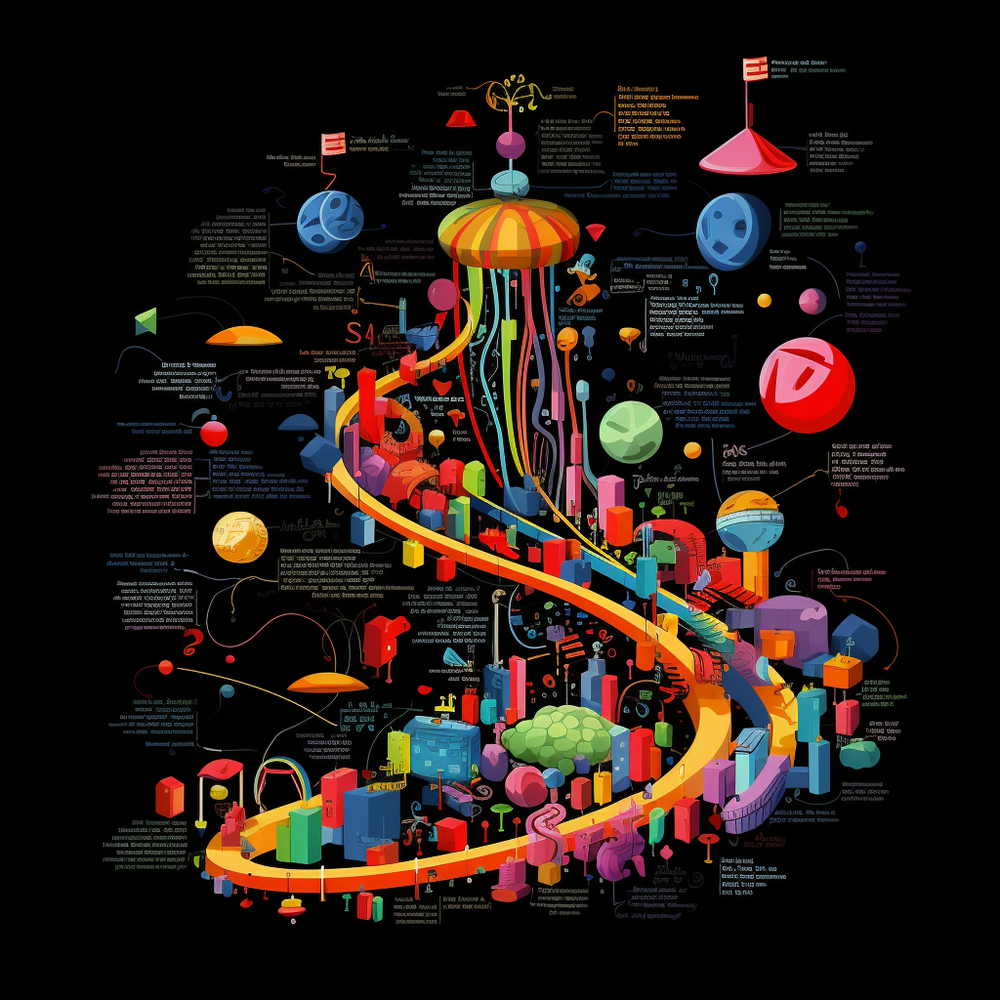The Takeaway with Nobu Hata
National Association of Realtors, 2nd June 2017
Online home searches do a good job of showing buyers what a home looks like but there are two ways in which the online experience falls short. The first is helping buyers consider all areas in a metro area in which they could buy, and the second is what it will feel like to live in a particular area. The first is something real estate professionals are particularly good at helping with, because they can use their local expertise to suggest areas to look in that buyers might never have thought of. The second is something virtual reality is particularly good at doing, because it can help buyers feel like they're experiencing a neighborhood without having to actually be there.
Both of these topics and more get a thorough run-through as Nobu Hata of NAR picks the brain of the guru behind The New York Times real estate section, Matthew Shadbolt, director of real estate products at the paper.
Nobu Hata: Welcome to the Takeaway. This is Nobu Hata, director of member engagement for the NATIONAL ASSOCIATION OF REALTORS®. I’m super-super stoked to be bringing you a really good friend of mine and fellow real estate nerd and thought leader: Matthew Shadbolt of The New York Times. Matthew, say hello to everybody.
Matthew Shadbolt: Hello, everybody.
Nobu: Your history in real estate goes beyond The New York Times real estate stuff, doesn’t it?
Matthew: Yes, it goes all the way back to 2006, when I joined the Corcoran Group here in New York City as their head of digital. They were looking for a digital guy to come in and basically run their web site.
Nobu: It’s pretty amazing and we’ve been talking a lot over the last couple of years since you’ve been at The New York Times the amazing amount of consumer data that you guys are starting to glean and that’s some of the things that I really want to talk about with your chat today. I want to hit on this idea about content and being useful. Every second, 8,000 tweets go live, 1,500 Instagrammers post images, 54,000 people press like on Facebook, 2,000 YouTube videos play, 46,700 people are connected to Google Search, and, shockingly. 2.3 million emails go out every single second. When it comes to real estate, how can we stand out?
Matthew: Yeah, unfortunately, I think this is really just the tip of the iceberg in terms of content production, but one of the interesting things around this is that a lot of folks are starting to realize that the cost of producing this information is not necessarily correlating to the return that they get. It’s something that they call peak content. That’s a marketing term that’s used in reference to this, where essentially the investment necessary to keep attention is going to be higher than the impact on revenue and it’s going to cost you more to get those eyeballs and especially to keep those eyeballs. Anyone who’s trying to have a serious play in Facebook, for example, will know this. There’s a tremendous amount of noise and it’s incredibly unforgiving when it comes to something like the newsfeed. Remaining visible in the newsfeed, you’re really going to need to be consistently interesting and valuable to earn that equity within the newsfeed in order for it to pay returns for you.
One of the things that we hear a lot of from our users is that they can get listings anywhere. Finding the listings, especially online, isn’t really a problem. They can get them from brokerage sites, portals, and an email via an agent. Where they need help is in understanding where to look: which neighborhood, which town, and things like that. That’s still unsolved when it comes to the online experience of looking for real estate.
A good example of this is the differentiation between a city centric search and a suburban search. For us in New York, there’s a very big difference between an Upper East Side search and an Upper West Side search in terms of what you will be looking for and the kind of results that you will get and it’s sort of a hard delineation between neighborhood boundaries. It’s at a street level, between Midtown on the Upper West Side. But for suburban searches, it’s a lot fuzzier. When people say I’m looking for a place in Morristown, N.J., what they actually mean is the Morristown, N.J., area, and a lot of online portals don’t tend to surface the things that are nearby. So, if the user doesn’t know the name of the town immediately one over or two over from Morristown, N.J., the search doesn’t surface neighboring areas, because the user hasn’t searched for it. What they mean is, I’m interested in this kind of area, but because we apply this algorithmic, neighborhood-centric delineated boundary around a search online, users actually miss a ton of stuff and that’s actually what I see over and over. Offline, the agent will work with somebody in the Morristown area, but they will be very keen to show them things that are one or two towns over that the user may not even know about. It feels like a great opportunity to connect the dots there.
Nobu: Absolutely, and I think it’s merging this online result and offline experience and making it streamlined, I think, is going to be key. You are exactly right that agents, at the end of the day, are experts in their communities regardless of where that home happens to be. I think we are hamstrung right now with the way things are portrayed online. Consumers think this is all they’ve got, because consumers really don’t know what they don’t know at this point, right?
Matthew: Yes, that’s very true. It’s really interesting and sort of a technical problem in terms of how you surface things that would be most helpful that the user hasn’t actually searched for.
Nobu: One of the things I would always write about when I was an agent is the overflow neighborhoods that you could look at once you’re priced out of the prime neighborhoods that everyone is looking at. I would talk about alternatives for housing that is just nearby that you may not have thought about. You’re giving people something to think about nowadays beyond Google. I think that’s a key to a lot of people’s marketing.
Matthew: I agree, and one of the things that we talk a lot about in my group here at The New York Times is just prolonging that sense of enjoyment in the search process as long as possible. When you first start to look for a house, it’s very exciting, especially if you are a first-time buyer. This is the year I’m going to buy my own first house. I’m going to stop renting and there’s this sort of excitement, thrill, and there’s a little recreational searching going on, especially online. Then, once you start to get more serious, you start to get closer and closer to this cliff’s edge kind of moment where it’s like, oh…like the reality of the situation starts to bite and you find what you were trying to correlate to your dream is not necessarily the reality and that can be quite disheartening for people. So, this idea is to prolong that period of enjoyment and actually getting users to feel smarter and more confident about the choices they are making so that there is a less of a cliffs’-edge moment in terms of the harsh reality of the zeros and ones of the transaction kicking in. That’s where I think real estate pros can add a service to customers that can be really, really valuable.
Nobu: It’s prepping people better than a Google search can. Related to that, is virtual reality (VR) the next step in terms of being able to help people walk through these neighborhoods, help people explore on their own, discover on their own? Is that the next step in marketing for real estate?
Matthew: I think it certainly can help. I mean, when you think of real estate and VR there’s some obvious places that you go and what they might be together. I think one of the things that I might caveat that with is we have a fairly long way to go just with photographs, in terms of the quality of photographs at scale. There are some people who do some amazing things and there are people who struggle with that.
I think VR is many steps after photographs. Like, if you can nail photographs, or if you can get videos right, then maybe you can graduate to VR, but I think one of the interesting things around VR is the kind of people problems that it starts to address. This idea of really getting an immersive sense of the vibe of a neighborhood is what VR is really good at in a way that photographs or videos can’t do. Like, VR can help you understand what it’s like to walk your dog in the park on a Sunday morning or sit at the bar on a Saturday night or eat at that great restaurant just around the corner of where you’re thinking about living. VR is really good at that stuff and it’s great at answering the question of what’s beyond the four walls of the apartment. I think that’s what excites me about VR.
Nobu: Absolutely. Well, Matterport is already part of many agents marketing repertoire now, and being able to send a Samsung Galaxy headset and phone to a foreign buyer who wants to walk through the home from his home wherever he is on the other side of the planet. I’m hearing more and more about agents doing that. Is this the new normal for folks? I mean, going beyond listings? Should we be preparing for your kid, too, who will be buying homes within the next 20 years? Should we be prepared for their new normal when it comes to agents and brokers around the country?
Matthew: I think it’s early days at the moment. I mean, if you look at how many VR tours have been produced versus the amount of listings and photographs there are, it’s a very tiny amount, but it’s incredibly effective at getting people to understand what that nature of the surrounding space is. You know, for me, the interesting thing isn’t necessarily touring the apartment. The interesting thing is being able to go outside, because photographs, while they are very, very effective and have been for a long time at getting people to understand what the nature of space is, it’s being able to go outside, especially in a city—that’s the strong suit of VR. What does it feel like to walk to the subway? What’s my walk to the grocery store going to feel like? That’s really tough to do with photos, but you can do it beautifully with VR.
I’ve seen things—even Facebook Live virtual tours—where people are asking questions. I think that’s really helpful. It’s sort of that level of interactivity that is really important, so the more you can get the direct interaction with the one-on-one user and have them ask questions, point out things or get you to show them things again or open doors, look underneath things, things that you would do at a real showing, that is where the stuff can be really powerful.
Nobu: Interaction, usefulness, helpfulness—they’re all key when it comes to whatever it is that people are experiencing.
Matthew: Yes, you have to ask yourself, what is the people problem here? The people problem here is to help me understand what it feels like to live here. Is this right for me? Will it be right for my family? Is it right for my lifestyle? How does this fit in with how I see myself as an individual? The more you can bring the answers to those things to light, the more value you have within the transaction.
Nobu: And this new normal is helping people make decision. Uber has changed the way people think about owning cars. I’ve seen it in New York and here in Chicago: people getting rid of parking lots for their developments and instead going all out on things like amenities.
Matthew: Yes, I completely agree. One of the interesting things about Uber is they view themselves as a technology company, and even though people think of them as a transportation service, what they are really interested in doing is getting you to what you want to do faster. They are a way to shrink time between things. They get you to the bar earlier so you can hang out with your friends, and that’s what is valuable about them, or you getting home earlier to spend more time with your family. That’s where Uber becomes extremely valuable. They are the means of you actually getting what you want in a convenient and faster way. In the same way, real estate agents are really facilitating incredible experiences in people’s lives.
Nobu: Yes, reducing friction and saving people time. If you ask any REALTOR® and if they dig down deep they know they do this for everybody. Most consumers just don’t know about it yet, which, again, ties back in to what we were talking about from the beginning of this. Matthew, is Twitter the best way for folks to have cool conversations with you?
Matthew: Yes, absolutely! I am @MatthewShadbolt on Twitter.
Nobu: Awesome! Thanks, Matthew!
Nobu Hata is the director of digital engagement for the National Association of REALTORS®. Before joining NAR, he was a real estate agent with Edina Realty in Minnesota. The self-described geek has called Alaska and Minnesota home. Now, he’s in in Chicago or on the road meeting with REALTORS® and association executives to talk about NAR, their business, and the integration of digital technologies in the real estate industry.
















